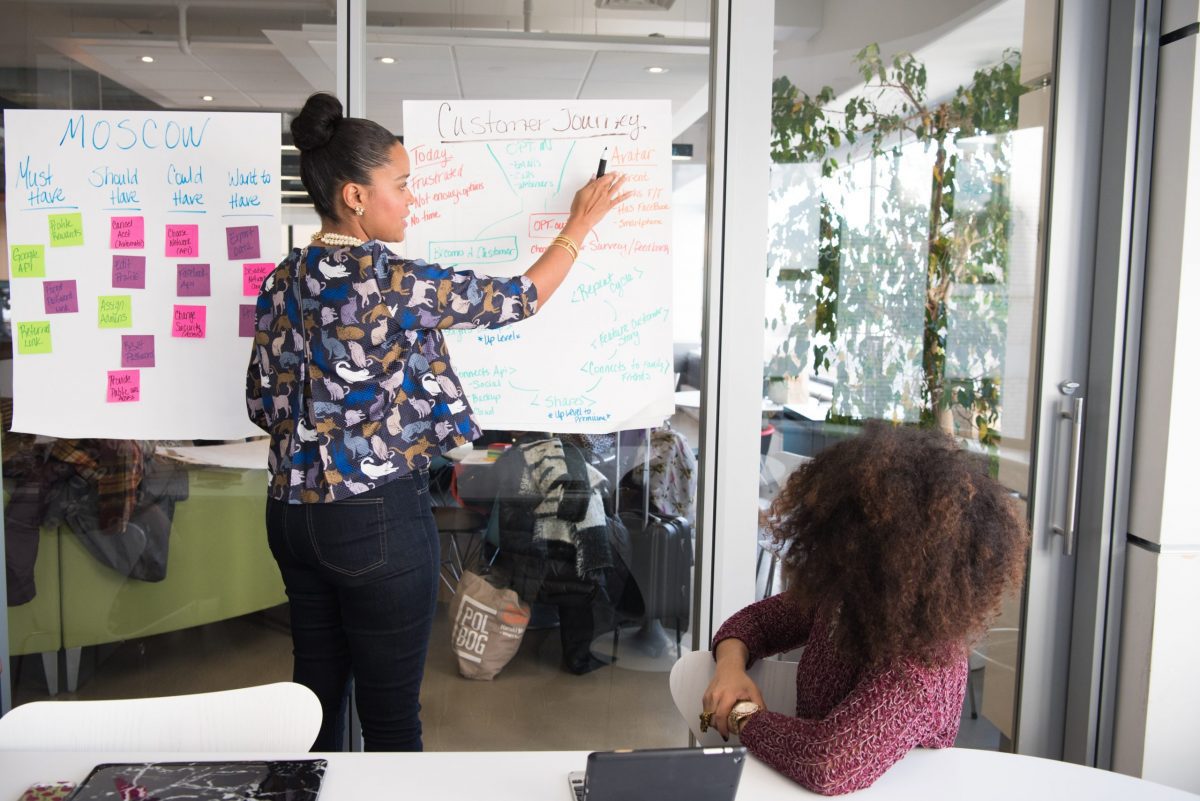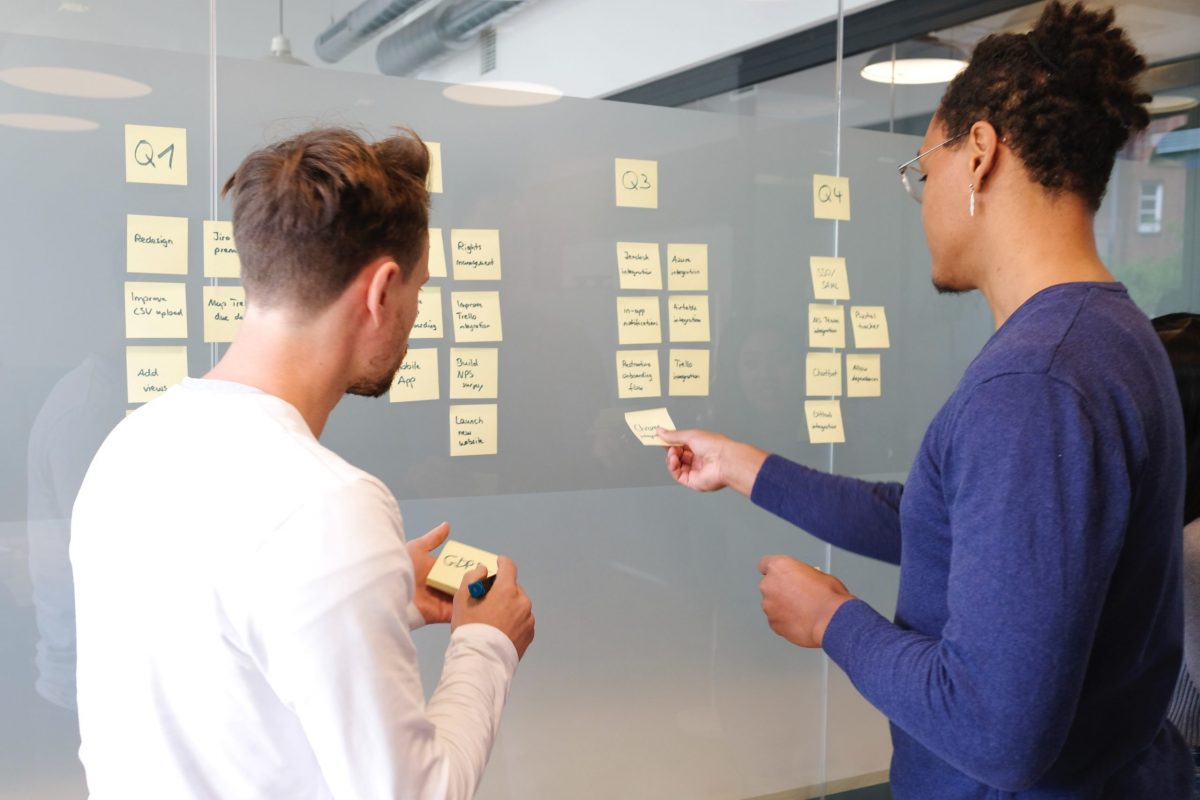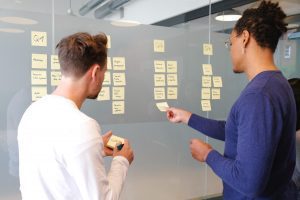Making the decision to become Agile is not an easy one. It requires getting your people out of their comfort zones. You have to ask yourself if you REALLY want to work on it. To do things that differently? To get your people and organization out of their comfort and stable zones while already dealing with so many other challenges? If the answer is yes, one of the key things you will need moving forward is to adopt the Agile mindset.
There are two notions of Agile: The Organization/Team and the personal/individual. In each, there are two dimensions: DOING Agile (use of tools/framework) and BEING Agile (mindsets & behaviors). They are all closely embedded, but first, it’s important to embrace an Agile mindset and way of thinking.
What is an Agile mindset?
 It is about PROACTIVELY CREATING change in uncertain and disruptive environments. Different from resilience, it is about REACTIVELY RESPONDING to change in a constructive way.
It is about PROACTIVELY CREATING change in uncertain and disruptive environments. Different from resilience, it is about REACTIVELY RESPONDING to change in a constructive way.- It is about analyzing how to understand what’s going on, identifying what uncertainty you are or will be facing, and figuring out how to create new opportunities as you go along.
- Rather than merely responding to change, Agile employees anticipate the future and proactively create change.
- Organizational agility is the capacity to spot and exploit opportunities in fast-changing environments.
- Research shows that employees who create change are 43% more effective than employees who merely respond to change. They also have greater career satisfaction and an enhanced sense of personal power and influence.
So, how do you adopt an Agile mindset? Here are some concrete examples of how to become an Agile thinker every day:
- Become aware of your thinking patterns.
- Choose to shift your thinking patterns…yes, this is possible!
- Regularly take the time to just stop doing and think.
- Adopt the Victim vs Player and the Knower vs Learner
- Essentialism: Cut through unnecessary thinking/work and focus on essential things (don’t waste what you learned from the current crisis about focus).
- Remain calm under stress and pressure…Easier said than done? The more you practice this, the easier it will be.
- Move away from any tendency to use a Command & Control leadership style and adopt the Coaching Leadership strategy. Delegate decisions and control to the closest point of action. Foster collective intelligence and empowerment with accountability and purpose. Make impeccable requests, which demand impeccable commitments.
- Practice authentic communication skills and techniques. Speak your truth and allow your people to do so as well by creating a psychologically safe environment.
- Accepting change is not comfortable but it is safe.
- Think customer and outcome.
Being Agile
There are many reasons why a company might want to invest in Agile. They may want to be a more efficient learning organization that quickly and effectively adapts to change, as well as generates new opportunities in a VUCA World. It may stem from a need to support “Customer Centricity” as a part of the core business strategy or culture. Or perhaps they want to make their people stronger and more comfortable with change and uncertainty with minimum stress and maximum efficiency for their mental and physical energy/health.
Whatever the reason, adopting an Agile mindset is a key part of setting out on the Agile journey. BE the agility you want to see in your organization. Agile is not a destination, it is a mindset and a way of working together.


 This is precisely how innovation in a corporation works. It is a hard job, with multiple tasks and things to do. You might be working on designing a new solution, defining the precise value proposition, and trying to get the buy-in from different stakeholders. Suddenly, an apparently simple problem is holding things up, and you might feel like it is the end of the world. You feel shame. You question your value, your capabilities, your management skills, or even your work.
This is precisely how innovation in a corporation works. It is a hard job, with multiple tasks and things to do. You might be working on designing a new solution, defining the precise value proposition, and trying to get the buy-in from different stakeholders. Suddenly, an apparently simple problem is holding things up, and you might feel like it is the end of the world. You feel shame. You question your value, your capabilities, your management skills, or even your work.


 When we start to
When we start to 


 Allow me to emphasize this fourth lesson for a moment. Agile is often presented as the remedy that will heal all corporate ailments. This is overly simplistic, and some may even consider it an insult to their intelligence. However, the natural tendency of this person is to sway to the other end of the pendulum and negate any benefit of the new way of working. This, too, is foolish.
Allow me to emphasize this fourth lesson for a moment. Agile is often presented as the remedy that will heal all corporate ailments. This is overly simplistic, and some may even consider it an insult to their intelligence. However, the natural tendency of this person is to sway to the other end of the pendulum and negate any benefit of the new way of working. This, too, is foolish.

 The second aspect that made this program different was that it was not designed as the typical immersive, residential, intensive x-day workshop. Instead, we scheduled shorter interventions several weeks apart. This design was deployed before the pandemic, so the sessions were held face-to-face. Nevertheless, this concept has survived to this day as a valid structure for most of our hybrid or purely online leadership development journeys.
The second aspect that made this program different was that it was not designed as the typical immersive, residential, intensive x-day workshop. Instead, we scheduled shorter interventions several weeks apart. This design was deployed before the pandemic, so the sessions were held face-to-face. Nevertheless, this concept has survived to this day as a valid structure for most of our hybrid or purely online leadership development journeys.



 Then, eventually, there was a point when I realized that the pain of not doing anything was larger than the pain of change. So, I started my
Then, eventually, there was a point when I realized that the pain of not doing anything was larger than the pain of change. So, I started my